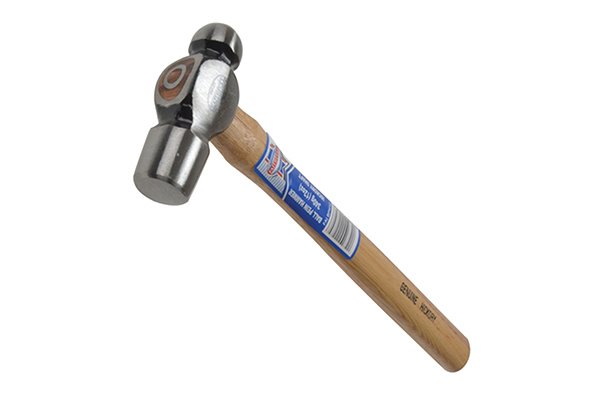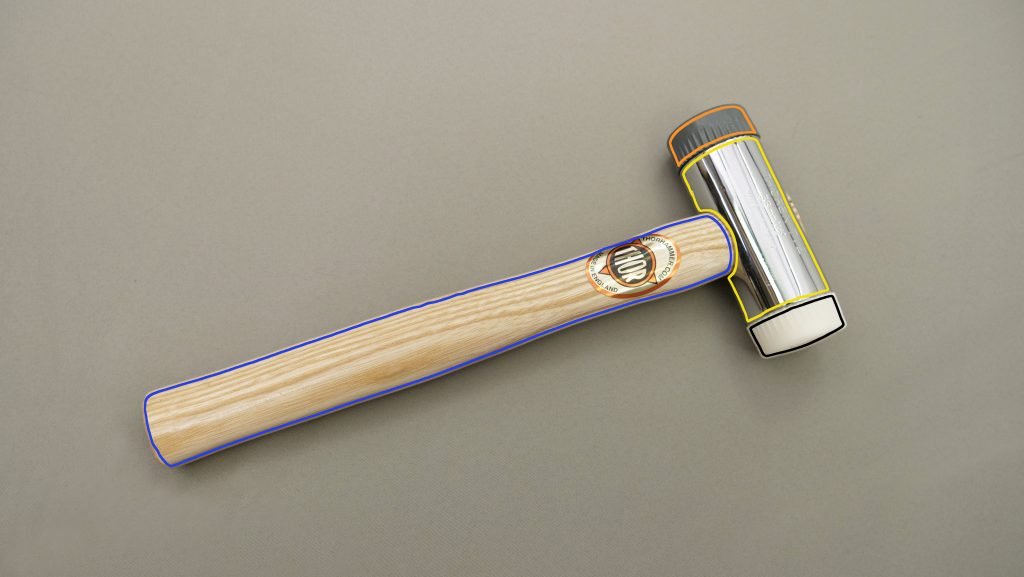Are you curious about what hammer to use with a chisel? Well, you’ve come to the right place! Whether you’re a budding woodworker or just want to tackle a DIY project, understanding the right tools is essential. So, let’s dive in and explore the world of hammers and chisels!
When it comes to using a chisel, having the right hammer is crucial. The choice of hammer depends on the type of chiseling work you’ll be doing. Different hammers offer different benefits, so let’s find out which one suits your needs best!
Now, let’s uncover the wide array of hammers that can accompany your chisel, from the trusty mallet to the versatile claw hammer. By the end of this article, you’ll have a clear picture of the perfect hammer-chisel combo, empowering you to tackle your next woodworking or home improvement project like a pro! So, let’s get started on this exciting journey together!

Choosing the Right Hammer for Chiseling: A Comprehensive Guide
Regardless of whether you are a professional woodworker or a DIY enthusiast, having the right tools for the job is crucial. When it comes to chiseling, using the correct hammer can make all the difference in terms of precision, control, and efficiency. In this comprehensive guide, we will delve into the world of hammers and explore the different types that are suitable for chiseling. So, if you’ve ever wondered, “What hammer do you use with a chisel?”, you’ve come to the right place.
1. The Claw Hammer: A Versatile Option for Woodworking
When it comes to versatility, the claw hammer is a popular choice among woodworkers. Its distinct feature is the curved claw on one side, which is typically used for pulling out nails. However, this type of hammer can also be used with chisels. The flat end of the claw hammer provides a solid striking surface, allowing for controlled and precise blows when working with a chisel. The weight of the hammer should be considered as well, with a range between 16-20 ounces being ideal for chiseling.
While the claw hammer offers flexibility in terms of functionality, it may not provide the same level of control as a specialized chisel hammer. Additionally, the curved claw can get in the way when using the flat end of the hammer for chiseling. Therefore, if precision and control are of utmost importance, a dedicated chisel hammer may be a more suitable choice.
2. The Chisel Hammer: Designed for Precision and Control
As the name suggests, a chisel hammer is specifically designed for use with chisels. This type of hammer typically features a cylindrical-shaped head made of hardened steel, which provides a solid striking surface for precise blows. The weight of a chisel hammer usually ranges from 12-16 ounces, offering optimal control without causing excessive fatigue.
One of the key advantages of using a chisel hammer is its ergonomic design. The handle of a chisel hammer is often crafted with a non-slip grip, allowing for a comfortable and secure hold. This reduces the risk of accidents and ensures the accuracy of each strike. Additionally, the cylindrical head of the chisel hammer minimizes the chances of the hammer slipping off the chisel, ensuring a consistent and controlled chiseling experience.
3. The Mallet: Ideal for Striking Chisels
When it comes to striking chisels, a mallet is often the go-to tool for many woodworkers. Unlike hammers, which have a solid metal head, a mallet features a soft striking surface made of materials such as rubber, wood, or plastic. The advantage of using a mallet with a chisel is the reduced risk of damaging the chisel or workpiece. The soft striking surface absorbs the impact, preventing any unwanted dents or marks on the wood.
When choosing a mallet for chiseling, consider the material of the striking surface. Rubber and plastic mallets are commonly used and offer good durability. However, wood mallets provide a traditional and aesthetic appeal, while also offering a satisfactory striking force. Select a mallet that feels comfortable in your hand and provides sufficient weight for effective chiseling without causing excessive strain.
4. The Dead Blow Hammer: Perfect for Delicate Chiseling
If you’re working on delicate or intricate chiseling tasks, a dead blow hammer may be the best option for you. Dead blow hammers are designed to minimize recoil and maximize control. They feature a hollow head filled with steel or lead shot, which absorbs the impact and prevents the hammer from bouncing back. This ensures that the force is directed solely towards the chisel, resulting in precise and controlled strikes.
When using a dead blow hammer with a chisel, you can expect minimal vibration and reduced noise. The absence of recoil eliminates the risk of the chisel skipping or jumping, allowing you to work with greater accuracy. This makes the dead blow hammer particularly useful for tasks such as carving intricate details or creating mortises.
5. The Rubber Mallet: Gentle Force for Chisel Work
When delicacy and precision are paramount in your chiseling tasks, a rubber mallet can be an excellent choice. Rubber mallets are designed with a solid rubber head that provides a gentle striking force without damaging the chisel or workpiece. The soft rubber surface offers more forgiveness, ensuring that delicate materials or intricate designs are not compromised during chiseling.
The weight of a rubber mallet typically ranges from 12-24 ounces, allowing for controlled and consistent strikes. Some rubber mallets also come with interchangeable heads, providing versatility for different chiseling applications. Whether you are working on carpentry, woodworking, or sculpting, the rubber mallet’s ability to deliver force with precision makes it an invaluable tool for chiseling.
6. The Sledgehammer: Heavy-Duty Chiseling
While the previous hammer options are suitable for most woodworking or DIY chiseling tasks, there are instances where a more substantial hammer is required. The sledgehammer, with its large and heavy head, is designed for heavy-duty chiseling, demolitions, or breaking through stubborn materials. If you are working on tasks that require significant force or where precise strikes are not crucial, a sledgehammer may be suitable.
It’s important to note that using a sledgehammer with a chisel requires caution and proper technique. Due to its size and weight, the strikes can be powerful and might pose a risk to both the user and the surrounding area. Always prioritize safety and use appropriate protective gear when working with a sledgehammer.
7. Choosing the Right Hammer for Chiseling: Considerations and Tips
When selecting the ideal hammer for chiseling tasks, it’s essential to consider a few key factors. First, determine the type of chiseling work you’ll be undertaking. Delicate carving tasks require a different type of hammer compared to heavy-duty demolitions. Consider the material you’ll be chiseling as well. Softer woods may benefit from a rubber mallet, while harder or stubborn materials may require a heavier tool.
Additionally, consider the handle grip of the hammer. Look for a handle that provides a comfortable grip and reduces vibrations. Ergonomics play a crucial role in preventing injuries and ensuring accuracy throughout the chiseling process. Lastly, don’t shy away from experimenting with different hammers to find the one that suits your personal preferences and working style.
Remember, chiseling requires patience, practice, and the right tools. By selecting the appropriate hammer for your chiseling needs, you can enhance your woodworking skills and achieve remarkable results.
Key Takeaways: What Hammer Do You Use with a Chisel?
- When using a chisel, it’s important to use the right hammer.
- A light-weight hammer with a wooden or rubber handle is generally recommended.
- Using a heavy metal hammer may damage the chisel or cause the hammer to bounce back.
- Choose a hammer that feels comfortable and balanced in your hand.
- Always wear safety goggles and gloves when using a hammer and chisel.
Frequently Asked Questions
Are you unsure about which hammer to use with a chisel? Don’t worry, we’ve got you covered! Read on to find the answers to some common questions on this topic.
1. What factors should I consider when choosing a hammer for a chisel?
When selecting a hammer for a chisel, you need to consider the weight, handle material, and striking surface. The weight should be appropriate for the task at hand, with lighter hammers used for delicate work and heavier ones for tough tasks. The handle should offer a comfortable grip that minimizes vibration and fatigue, while the striking surface should be wide and flat to ensure accurate strikes.
Additionally, you should also consider the type of material you’re working with. For softer materials like wood, a wooden or rubber mallet may be suitable. For harder materials like metal, a metal hammer with a hardened face would be more appropriate.
2. Can I use any hammer with a chisel?
While you can technically use any hammer to strike a chisel, it’s essential to choose the right one for optimal results. The type of hammer you choose depends on the task, the material you’re working with, and your personal preference. There are various types of hammers, including claw hammers, ball-peen hammers, and even specialized chipping hammers designed specifically for working with chisels.
Using the right hammer ensures that you can control the chisel better, accurately position your strikes, and minimize the risk of damaging your chisel or workpiece.
3. What’s the difference between a claw hammer and a ball-peen hammer for chisels?
A claw hammer and a ball-peen hammer are two common hammer types you can use with a chisel. A claw hammer typically has a flat striking surface on one side and a curved claw for removing nails on the other. It is versatile and widely available, making it suitable for most chiselling tasks.
On the other hand, a ball-peen hammer has a rounded striking surface on one side and a ball-shaped peen on the other. While it may not be the first choice for chisels, it could be used for specific tasks where control and precision are vital, such as when working with metal or stone.
4. Can I use a rubber mallet with a chisel?
Yes, you can use a rubber mallet with a chisel, especially when working with softer materials like wood. Rubber mallets are less likely to damage the chisel or leave marks on the workpiece. The rubber head also provides a softer impact, making it suitable for delicate tasks where you need to exert finer control.
However, keep in mind that rubber mallets may not be as effective with harder materials or heavy-duty chiselling tasks. For those, you may need to consider using a heavier hammer or a specialized chipping hammer.
5. What precautions should I take when using a hammer with a chisel?
When using a hammer with a chisel, it’s crucial to wear appropriate safety gear, including safety glasses and gloves, to protect your eyes and hands. Ensure that your workpiece is securely fastened or clamped down to prevent it from slipping or moving while you work.
Always strike the chisel with precision and control, avoiding excessive force that could cause the chisel to slip or damage the workpiece. Regularly inspect the hammer’s handle for any signs of wear or damage, and replace it if necessary for safe and efficient chiselling.

Summary
So, remember, when using a chisel, you should use a hammer that matches the chisel size. Using the wrong hammer can damage the tool or even injure you. A small chisel needs a light hammer, while a large chisel needs a heavier one. Find the right balance and let the hammer do the work for you. Happy chiseling!
In conclusion, using the correct hammer with a chisel is crucial for a successful and safe woodworking experience. By matching the hammer to the chisel size, you can ensure better precision, efficiency, and protection. So next time you reach for your chisel, don’t forget to choose the right hammer to pair with it.
